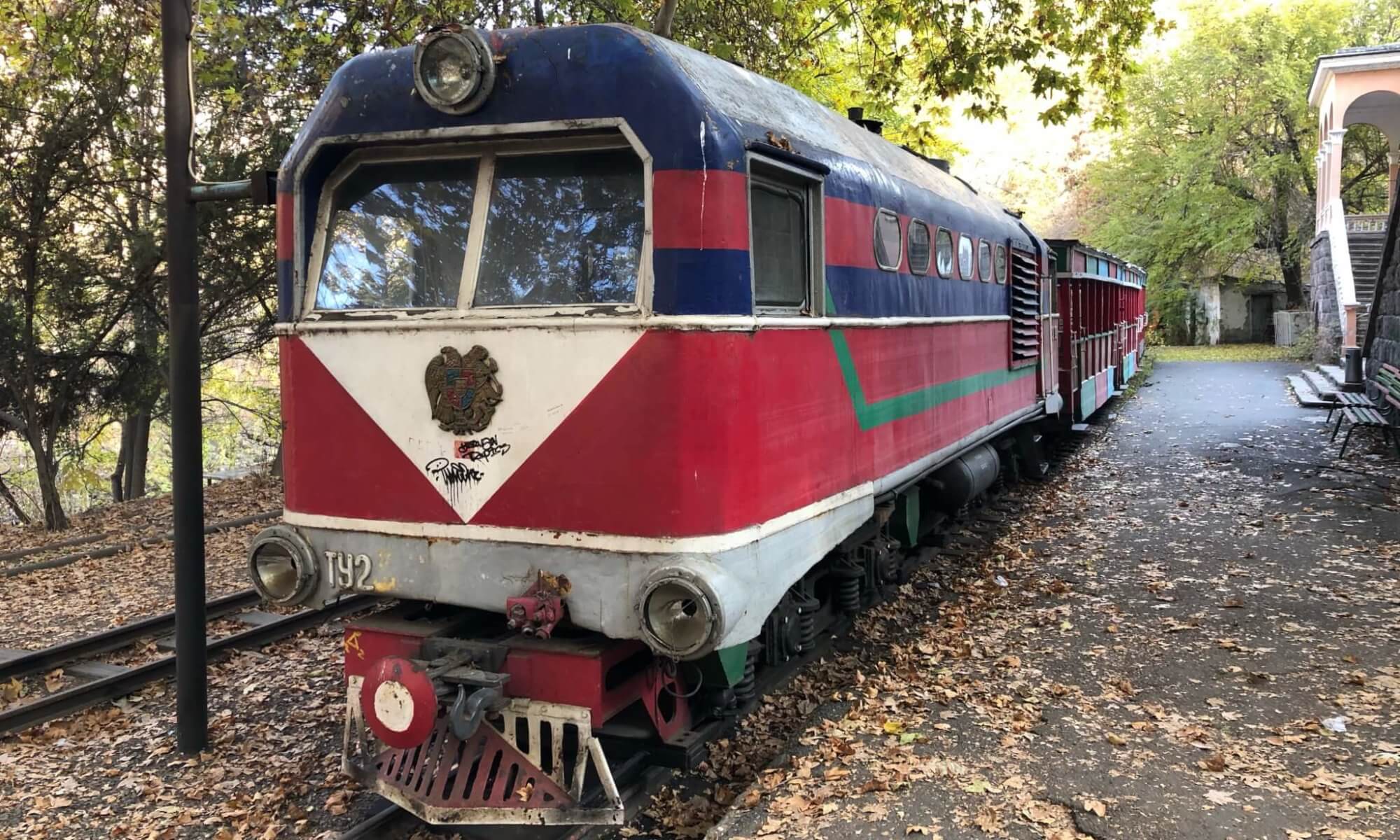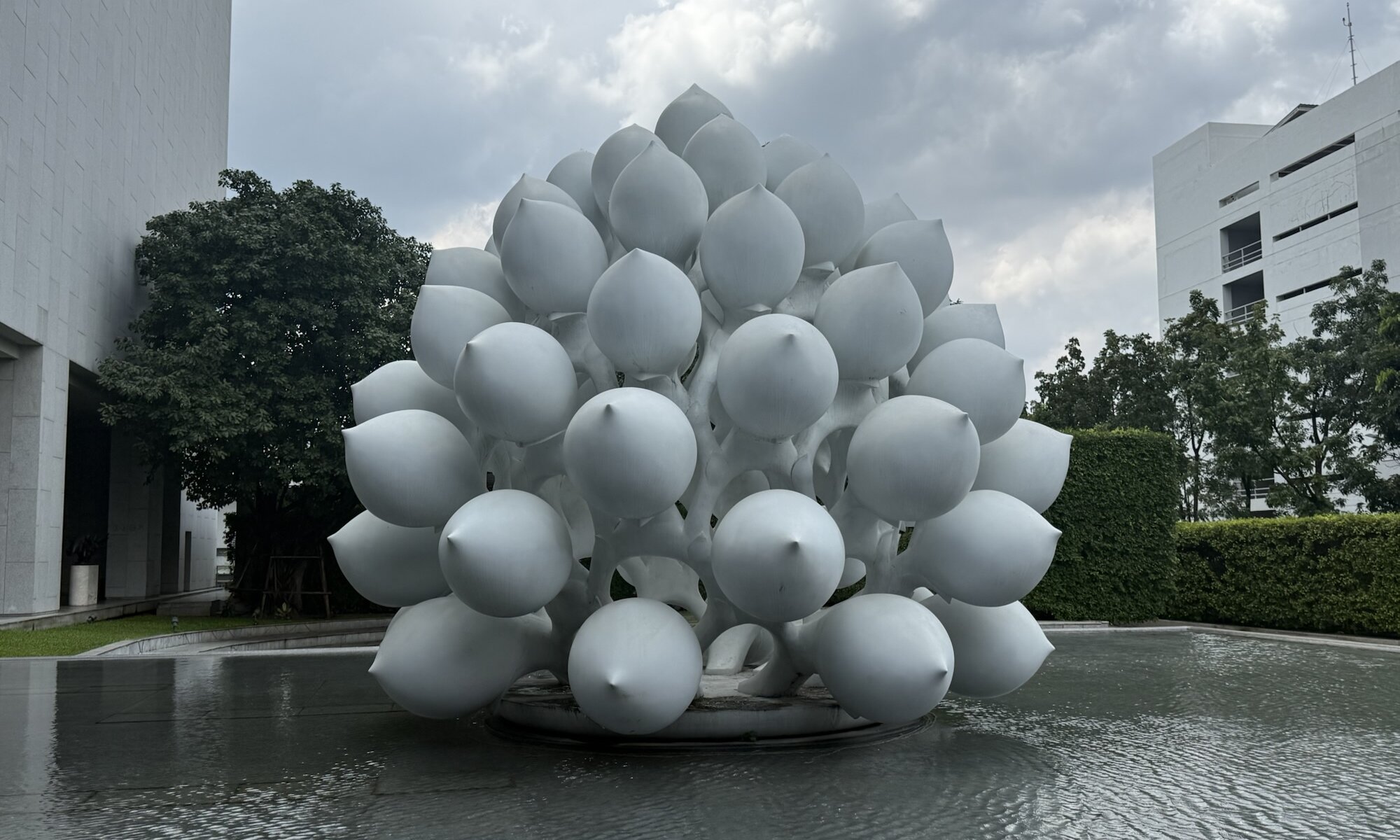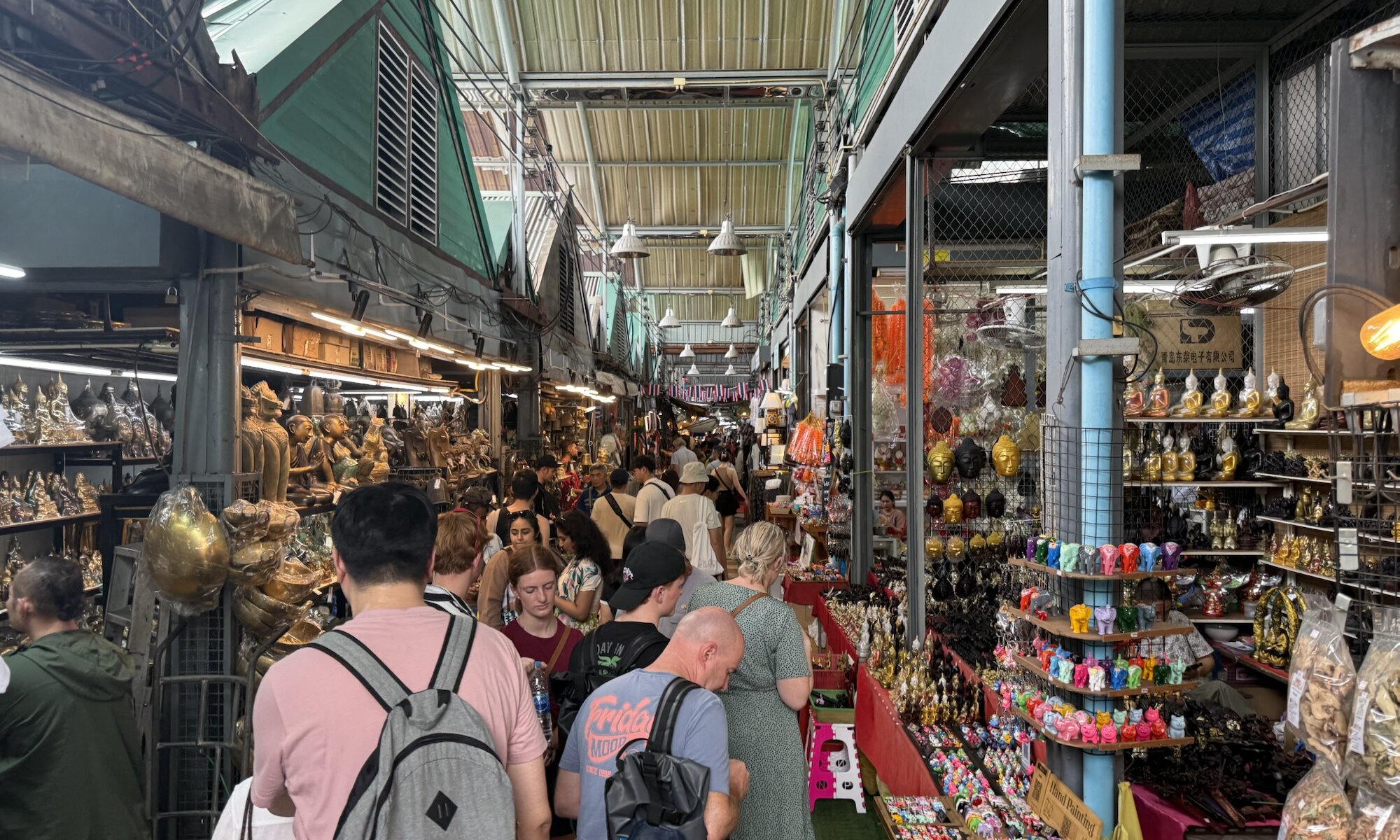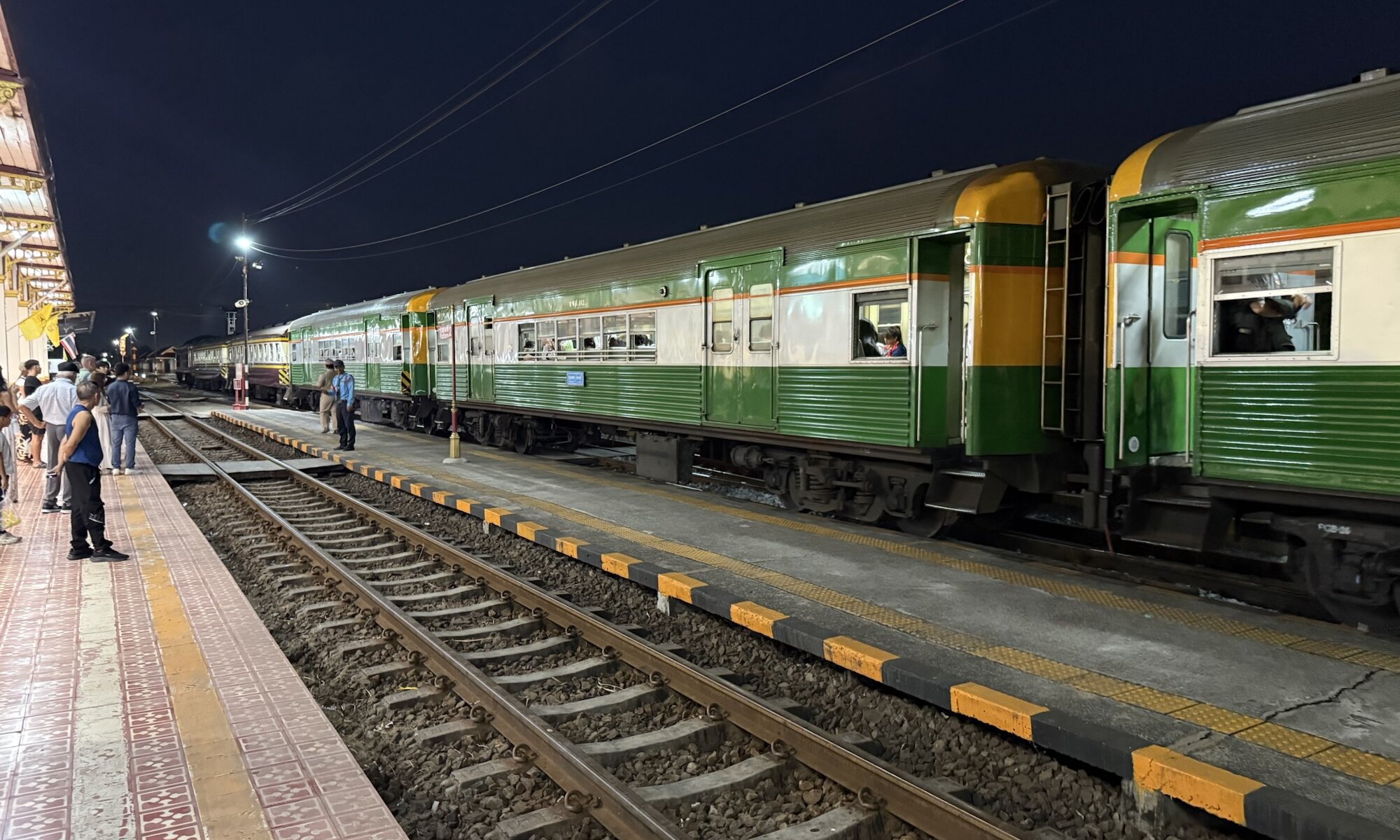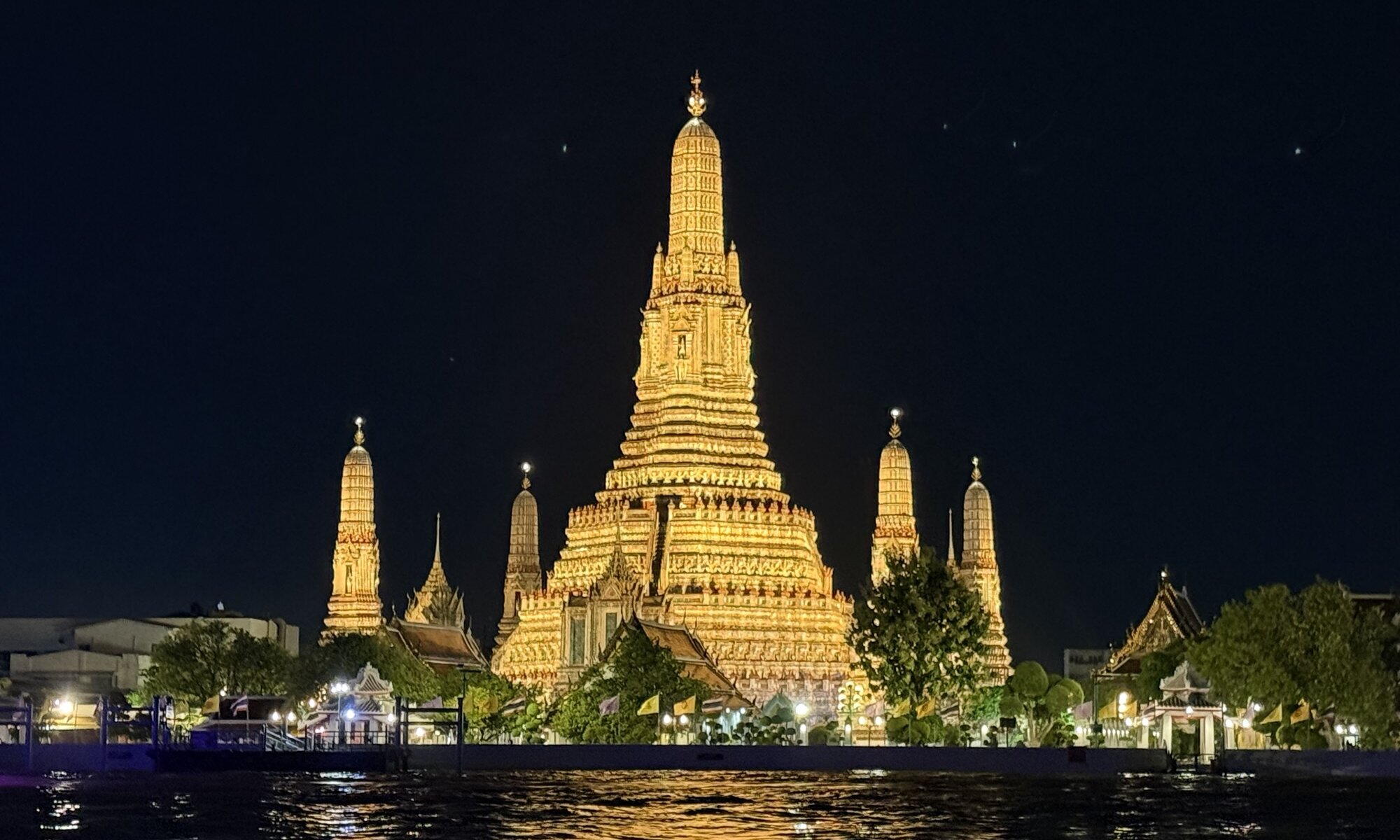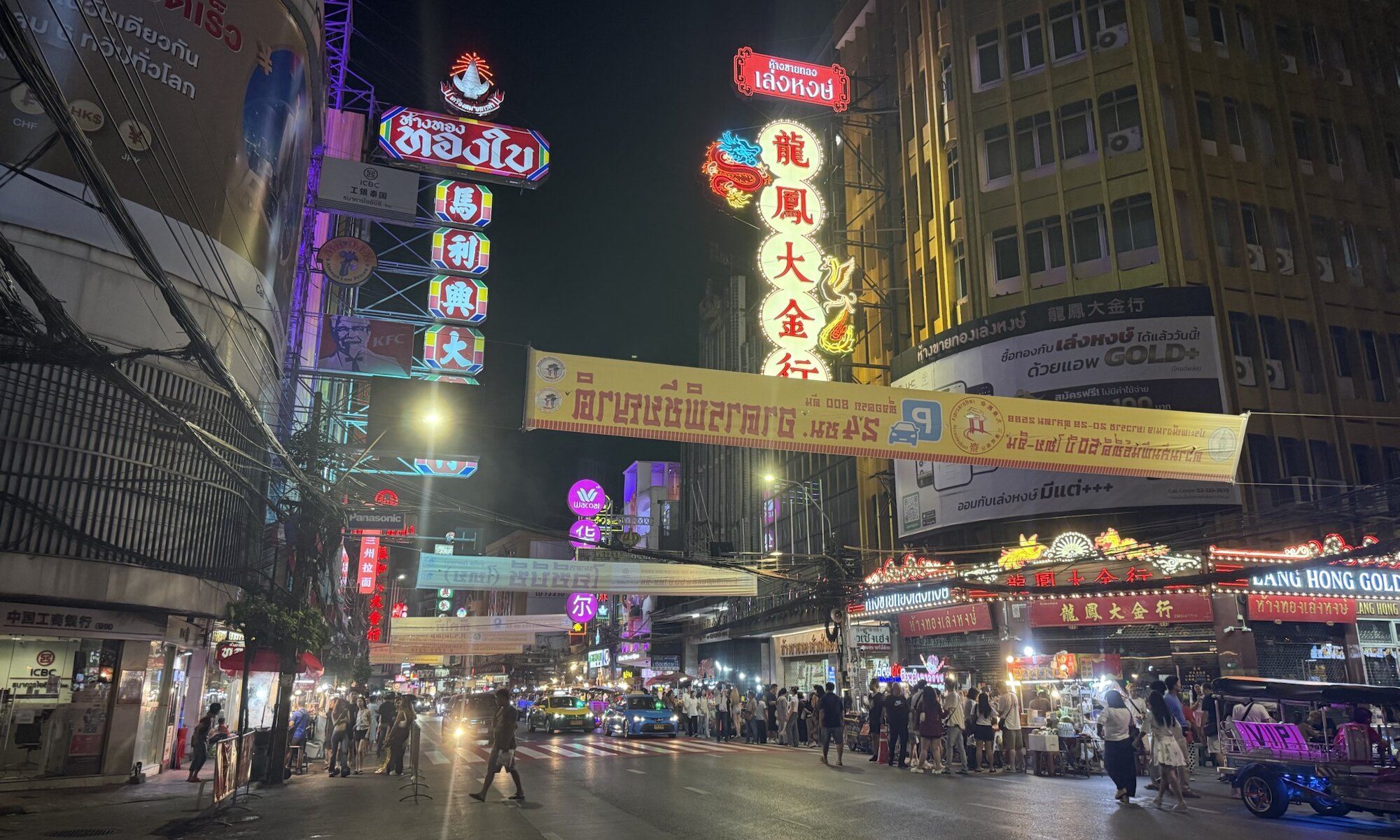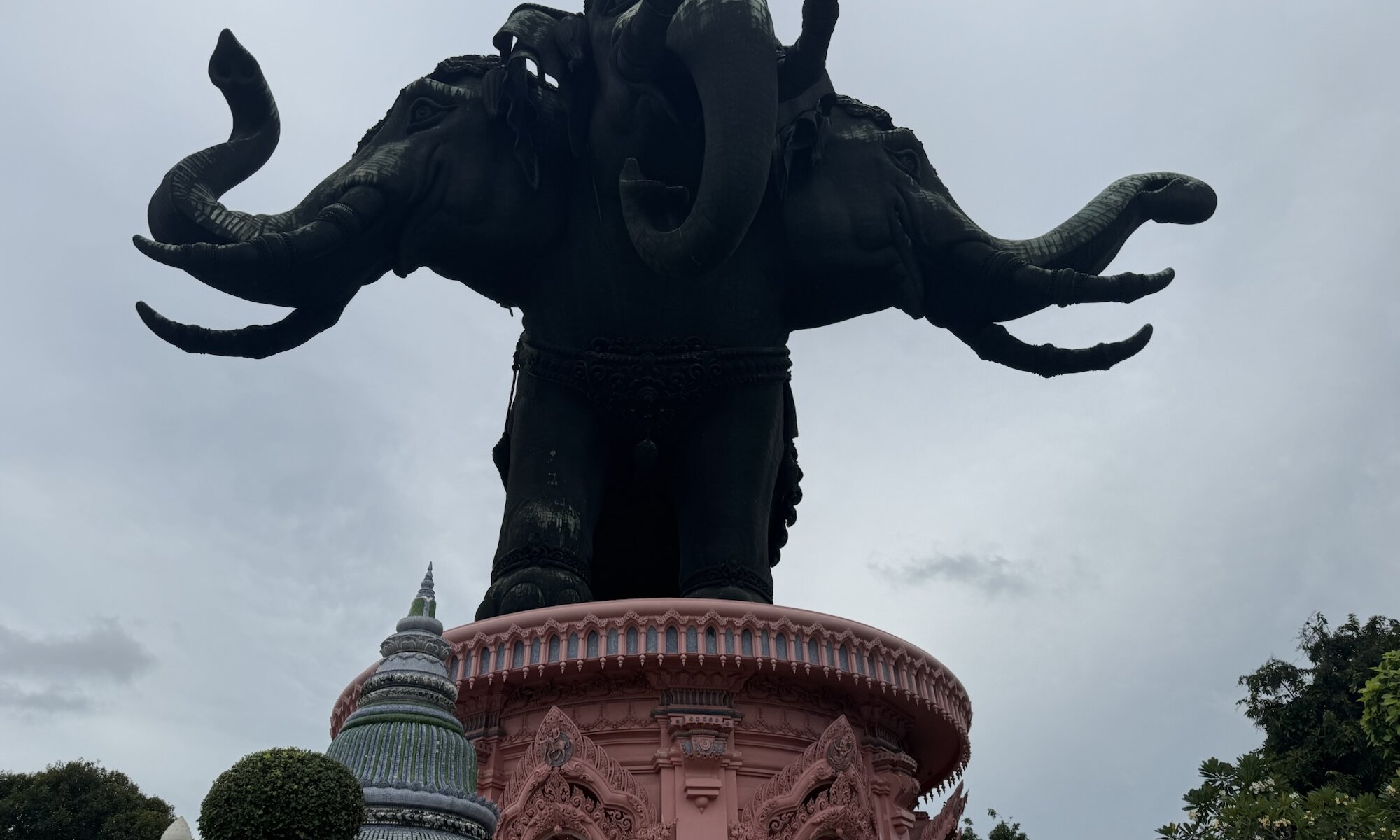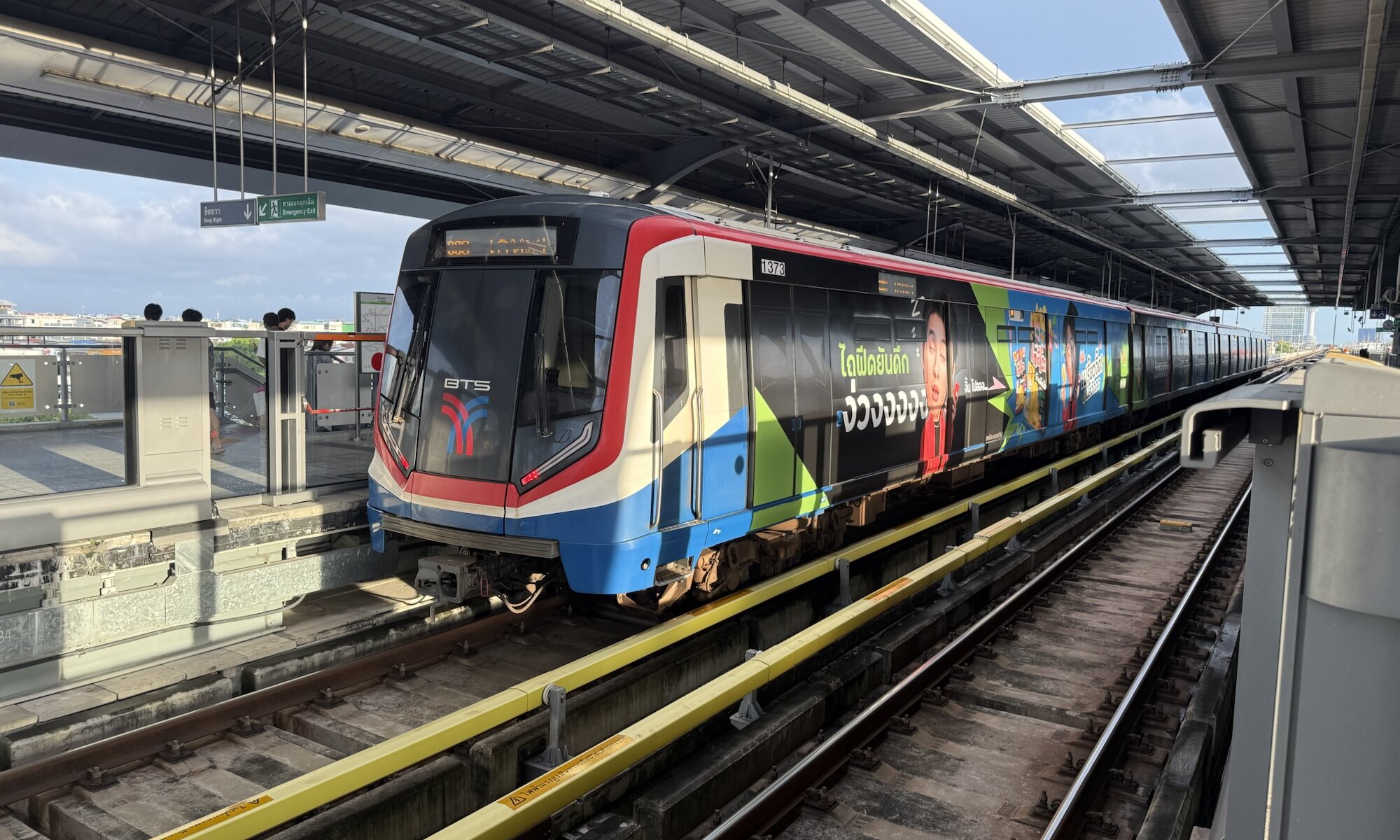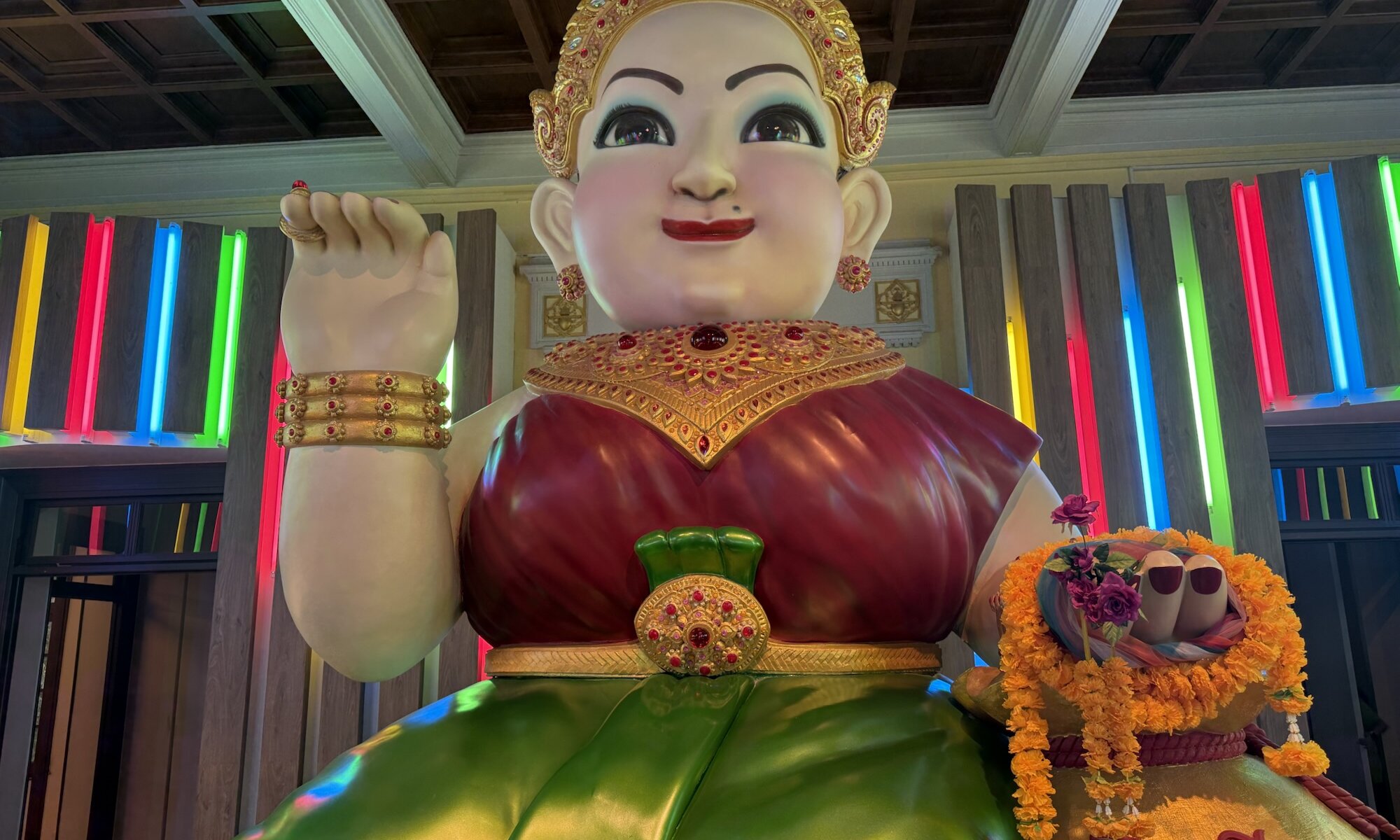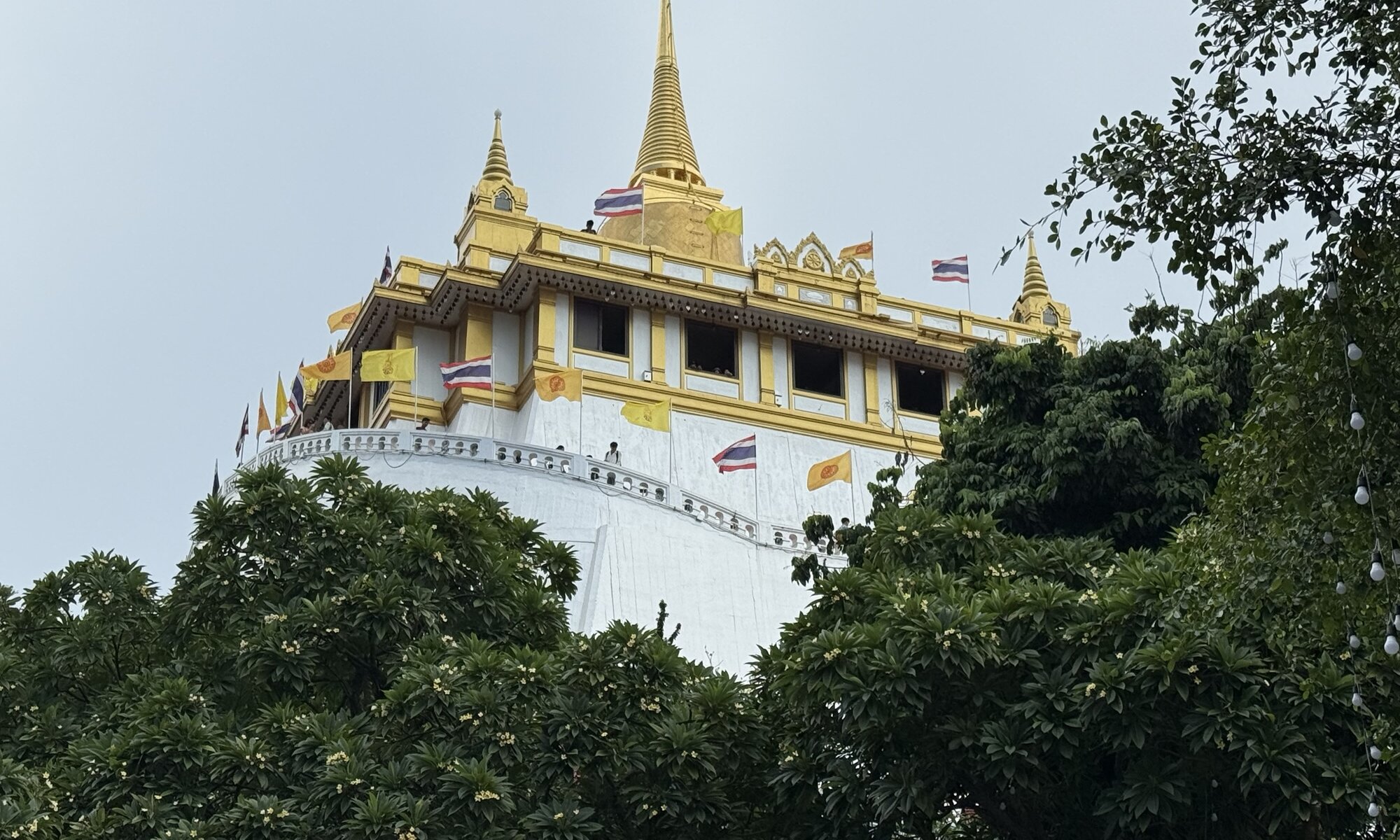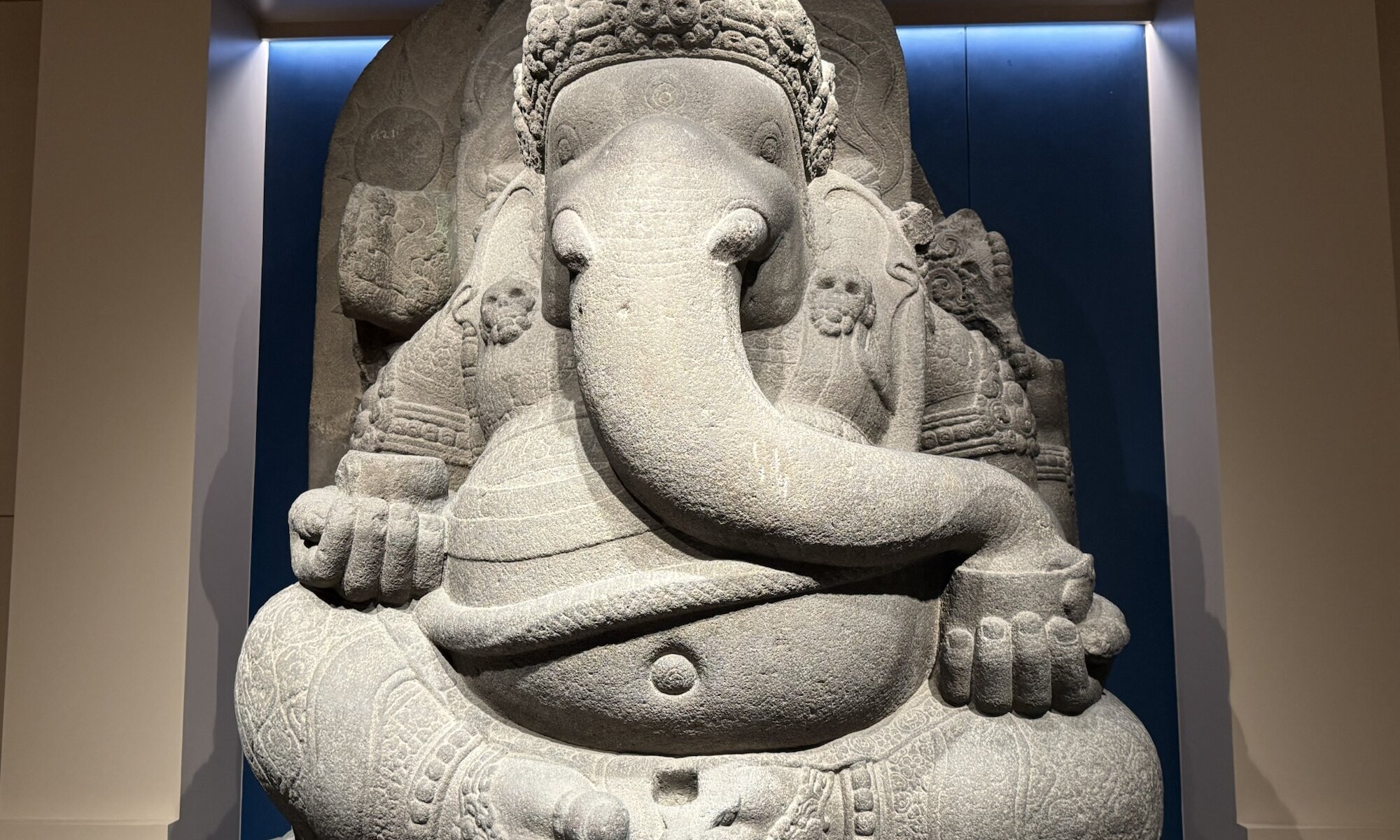The Museum of Contemporary Art in กรุงเทพฯ, often abbreviated as MOCA, stands as a beacon of modern artistic expression in the bustling Thai capital. Its architecture is striking, blending a modernist design with clean lines and an expansive, airy interior that invites visitors to immerse themselves in the creative atmosphere. The building’s façade is characterised by large glass panels that allow natural light to flood the galleries, creating an environment where artworks can be appreciated in vivid detail. Situated a little way from the city centre, MOCA offers a peaceful contrast to the busy urban surroundings, providing a contemplative space where art takes centre stage.
Continue reading “MOCA”Thai-style shopping
The Chatuchak weekend market in กรุงเทพฯ is an expansive, vibrant maze of stalls stretching over a vast area, often bustling with a lively mix of locals and tourists alike. Its structure feels more like a small city than a traditional market, with narrow pathways winding through sections dedicated to different goods. Colourful awnings and signs compete for attention amidst a lively chatter, enticing visitors to explore every corner. The market’s atmosphere is both chaotic and charming, with a mix of aromas from street food vendors melding with the sight of handcrafted goods and quirky souvenirs.
Continue reading “Thai-style shopping”12.5 hours
Travelling on the Special Express Night Train from กรุงเทพฯ to เชียงใหม่ offers a unique blend of adventure, comfort, and cultural immersion. As the train departs the bustling capital, the city lights slowly fade, giving way to the serene nightscape of the Thai countryside. This overnight journey is a cherished experience for those who want to traverse the distance while resting, waking up refreshed and ready to explore the mountainous northern city. The rhythmic clatter of the tracks and the gentle rocking of the carriage provide a soothing soundtrack, making it an ideal way to travel for both locals and tourists alike.
Continue reading “12.5 hours”Krung Thep
กรุงเทพฯ, known locally as Krung Thep Maha Nakhon, is famed for having the longest city name in the world: Krung Thep Maha Nakhon Amon Rattanakosin Mahinthara Ayuthaya Mahadilok Phop Noppharat Ratchathani Burirom Udom Ratchaniwet Maha Sathan Amon Piman Awatan Sathit Sakkathattiya Witsanukam Prasit. This full ceremonial name consists of multiple elements expressing its grandeur, history, and religious significance, making it an intriguing introduction to a city steeped in culture and tradition. Though commonly referred to as Bangkok internationally, the city’s Thai name encapsulates its identity as the ‘City of Angels‘, reflecting its rich mythological and royal heritage. It is a dynamic metropolis where ancient traditions blend seamlessly with modern urban life, offering an unforgettable experience for any traveller.
Continue reading “Krung Thep”Chinatown
กรุงเทพฯ’s Chinatown, known locally as Yaowarat, is a vibrant and bustling district steeped in history and culture. It was established in the late 18th century when Chinese immigrants settled in the area, drawn by trading opportunities during the reign of King Rama I. Over time, this neighbourhood developed into one of the largest and oldest Chinatowns in the world, blending traditional Chinese customs with Thai influences, creating a unique cultural tapestry that can still be experienced today.
Continue reading “Chinatown”Three-headed elephant
The Erawan Museum in กรุงเทพฯ is a remarkable cultural landmark, uniquely housed inside a colossal three-headed elephant sculpture, known as Erawan or Airavata from Hindu mythology. This impressive statue stands about 29 metres high and weighs roughly 250 tonnes, crafted from intricately attached copper plates that shimmer with detailed artistry. The elephant represents the mythical vehicle of the Hindu god Indra and is a powerful symbol in Thai culture, embodying harmony and balance through its three heads. The museum itself, located in the Samut Prakan area just outside central กรุงเทพฯ, was created by a visionary Thai businessman, Lek Viriyapant, who also developed other cultural sites like the Ancient City and Sanctuary of Truth.
Continue reading “Three-headed elephant”Skytrain
The BTS Skytrain in กรุงเทพฯ is an elevated rapid transit system that has revolutionised urban travel in Thailand’s bustling capital since its inauguration. Its network, comprising the Sukhumvit and Silom lines, elegantly runs above the city streets, providing commuters and visitors with a clean, efficient, and scenic way to navigate the often congested metropolis. The system is known for its punctuality and convenience, offering a welcome refuge from the city’s notorious traffic jams while delivering panoramic views of กรุงเทพฯ’s vibrant cityscape and river.
Continue reading “Skytrain”Only in Thailand
The Siam Museum in กรุงเทพฯ presents an engaging and interactive journey into Thai culture, history, and identity. Housed in an elegant 19th-century neoclassical building that once served as the Ministry of Commerce, the museum beautifully blends architectural heritage with modern exhibit technology. Visitors can expect to explore an array of thoughtfully curated displays that focus on what it truly means to be Thai, covering traditions, beliefs, and the evolution of Thai society from ancient times to the present day. The atmosphere is refreshingly hands-on, encouraging active engagement rather than passive observation.
Continue reading “Only in Thailand”Golden Mount
Wat Saket, often known as the Temple of the Golden Mount, is one of กรุงเทพฯ’s oldest and most unique temples, with roots tracing back to the พระนครศรีอยุธยา period before the 18th century. Originally called Wat Sakae, it underwent restoration and was renamed Wat Saket Ratcha Wora Maha Wihan by King Rama I when กรุงเทพฯ was established as the new capital, highlighting its importance in Thai royal and religious life. The temple sits just outside the old city of กรุงเทพฯ on a man-made hill, offering a distinct atmosphere from other temples located within the old city walls.
Continue reading “Golden Mount”Thai history
The National Museum in กรุงเทพฯ stands as a monumental beacon of Thai culture and history. Established in 1874 by King Chulalongkorn (Rama V), it was originally created to display the royal collections of his father, King Mongkut (Rama IV). The museum’s home is the former Wang Na Palace, once the residence of the viceroy or ‘Front Palace‘ – a position remaining in Thai royal tradition until King Rama V’s reforms. The site itself is steeped in history, with many of its buildings dating back to the late 18th century, offering visitors a glimpse into both royal heritage and architectural grandeur.
Continue reading “Thai history”